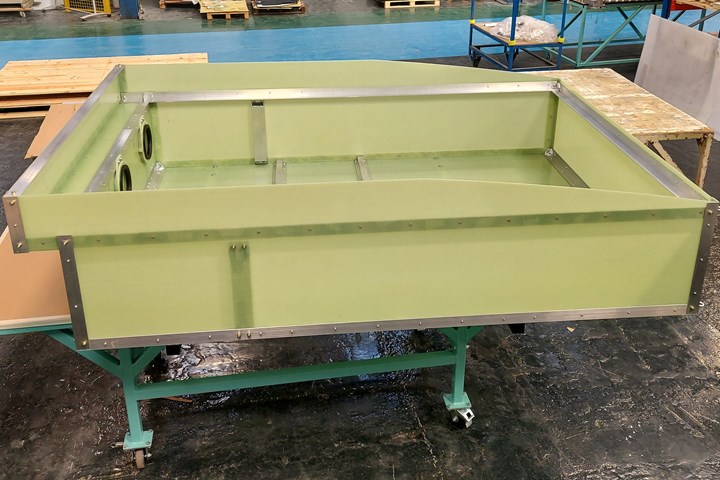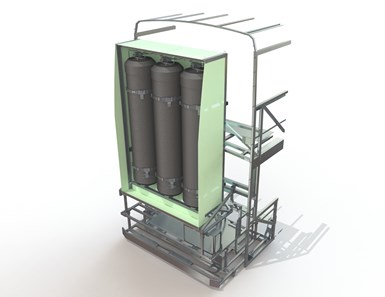NCC develops composite structural systems for bus fuel cell retrofits
Glass fiber storage structure increases energy storage density by 28%, meets cost and weight targets and ultimately enables a rapid retrofit of U.K. commercial buses, with potential for larger vehicles.
Share

Permali composite frame. All photo credit: The NCC
The National Composites Centre (NCC, Bristol, U.K.), in collaboration with Arcola Energy (London, U.K.) and advanced composites manufacturer, Permali (Gloucester, U.K.), have developed a low-cost composite storage structure for hydrogen fuel cylinders that can be retrofitted to existing commercial buses, enabling the switch to a clean energy source and reducing the emissions of large vehicles in the U.K.
Funded by the Office for Zero Emission Vehicles (OZEV) through the Niche Vehicle Network, the project team reportedly proved that a storage structure manufactured using composite materials was viable, meeting cost and weight targets to make the component commercially viable, as well as creating a design that meets road requirements and can be implemented rapidly.
Currently made from steel and aluminum, the team says it halved the weight of the structure by developing a composite alternative, from 200 kilograms to 100 kilograms. It also is said to have increased the energy storage density by approximately 28%, from around 740 watt-hours per kilogram to 950 watt-hours per kilogram. Arcola Energy will now be introducing the structural system to its bus applications.

Further, using Permali’s CE5 glass fiber material, the team of composites specialists developed a flat-pack modular solution, taking advantage of existing materials and capabilities within the supply chain to make a component that can be adopted by industry more affordably. The project also conducted an initial feasibility study for retrofitting the storage solution to other large vehicles, in this case a refuse truck.
The research indicated that with further development, more could be done to improve the weight and performance of the structure, reducing the overall weight of the vehicle, therefore lowering the center of gravity and increasing fuel efficiency.
“By using materials and processes already available in the supply chain, we’ve developed a solution that can be rapidly retrofitted to existing commercial buses, with the potential for it to be deployed on other large vehicles,” says Alex Doyle, technology program lead at the NCC. “This means that a major obstacle has been overcome, and the move to a clean energy source can happen sooner rather than later.”
Related Content
-
Understanding vacuum bagging layers in production, repair
Recognizing the functions of each layer in a vacuum bag schedule can help users discover what vacuum bag schedules work best for their application.
-
JEC World 2022, Part 1: Highlights in sustainable, digital, industrialized composites
JEC World 2022 offered numerous new developments in composites materials, processes and applications, according to CW senior editor, Ginger Gardiner, most targeting improved sustainability for wider applications.
-
Composites enable epic interior for Museum of the Future
For this one-of-a-kind lobby, AFI pioneered digital, reconfigurable molds to achieve organic-shaped, multifunctional panels and stairwell cladding.
















